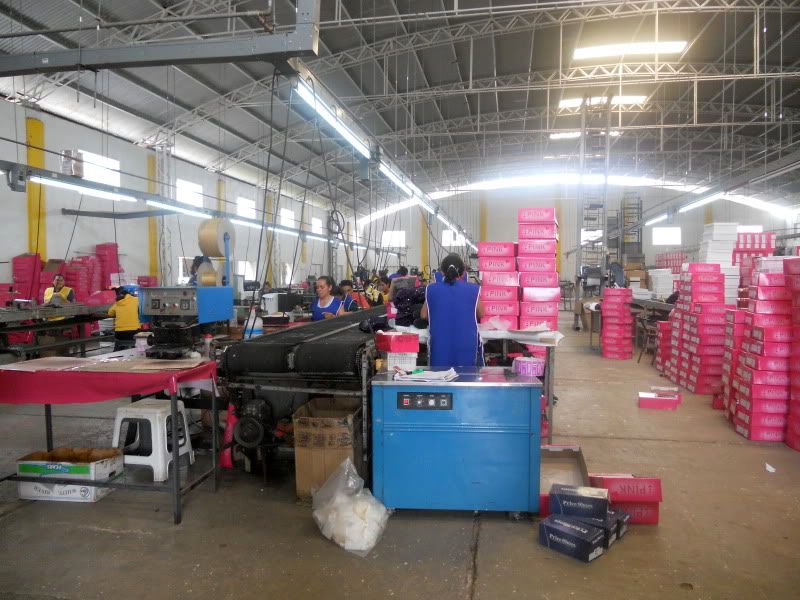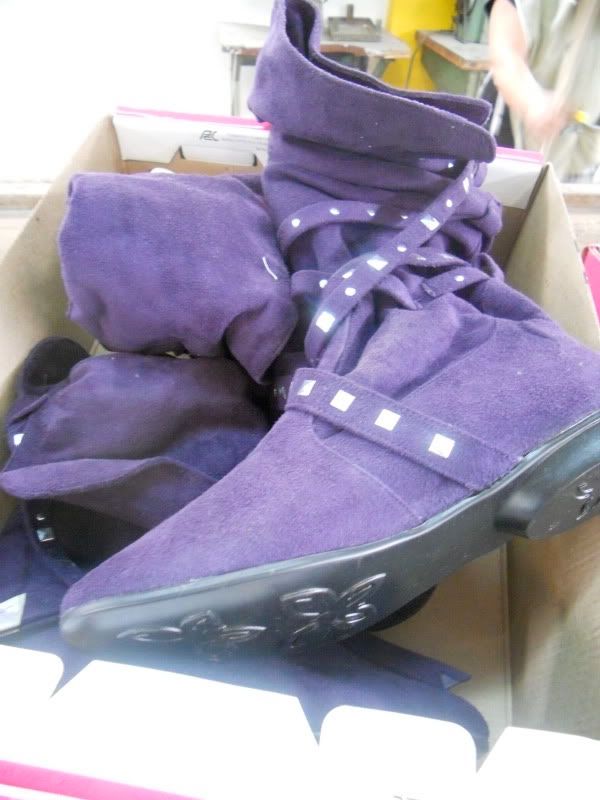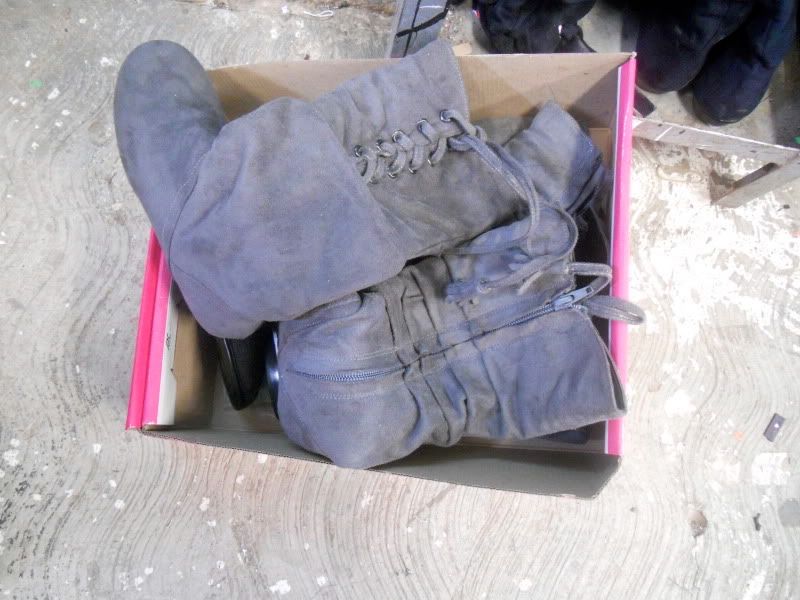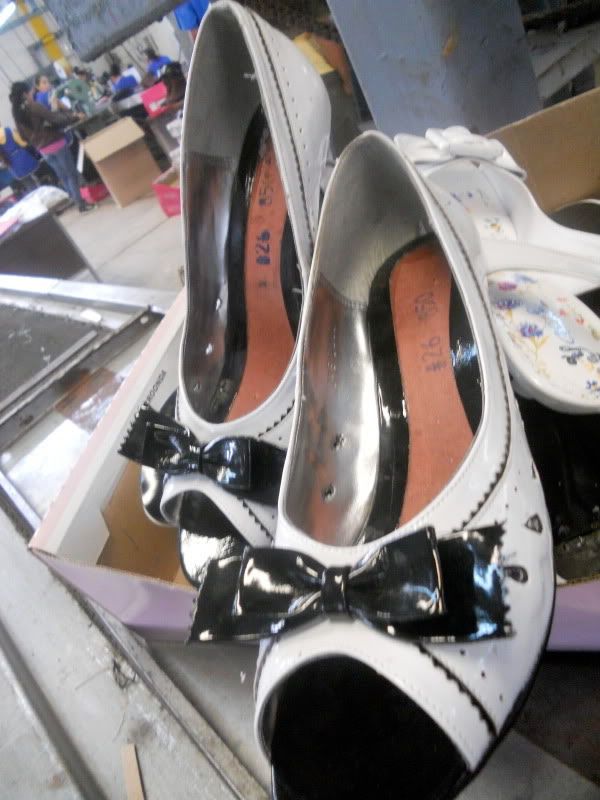
The shoe factory
If reading about the people I've visited inspires you to help, you can donate to the Center for Farmworker Families. Every penny given goes directly to these families for clothes, shoes, food, school supplies, and more.
As we traveled to the little ranchos, we heard again and again about young people employed in a shoe factory in Cuquio. We didn't expect to actually get a tour of the shoe factory, but it seems that the shoe factory had no idea why Americans might be snooping around and, for some reason, had no problem giving us a guided tour. And I must say, I will never think about my shoes the same way again.
The shoes they were making were for Price Shoes, specifically for a line of shoes called Pink. They were to be sold within Mexico, and they were all incredibly attractive women's shoes that I would probably take an interest in if I saw them in a shoe store.

See those sequins? They were put on there by hand. Some young woman has to glue those things on all day long, 8 hours a day, with no breaks.


They were making several kinds of boots for a new line. First one worker cut out the pieces of leather that would become the shoe. Then those pieces went to an assembly line where each worker did a very simple task - applying glue, sticking two pieces together, putting the boots-to-be in a machine that heats and then cools them into a mold to give them their shape, etc. As the boots passed through the 30 or so different stations, they slowly went from a few scraps of leather that looked nothing like boots into incredibly attractive, very trendy women's boots.
One person in our group asked one of the workers if her hands hurt. Yes, she replied. How could they not? She was repeating the same task over and over again for 8 hours every day. The workers got no breaks, unless they had to go to the bathroom. There were two shifts - 6am-2pm and 2pm-10pm. No breaks, no lunch. Each work station had a sign that said no standing, no cell phones, no smoking, and no talking. And the fumes in the place from the glue were awful. (One member of our group waited for us outside because of them, and another felt an asthma attack coming on.) Many of the workers who were applying glue did so with their fingers instead of with a brush or other tool.
As I've noted before, we had the police providing free transportation for us, so the police actually accompanied us when we visited this factory. One of our group's leaders is a lawyer in the U.S. so he asked a few questions of the police about Mexico's laws requiring companies to allow their workers to take breaks, etc. He noted that many of the locals, including the cops, were rather uninformed about Mexico's employment laws, so if the shoe factory was in violation of those laws, there's little chance the laws would ever be enforced.
Some of the workers wore yellow smocks but most wore blue. We found out later that those wearing yellow were part of a government subsidy program to bring employment to the area. The workers in yellow were hired for three month apprenticeship periods, during which time the government paid their salaries of 700 pesos per week (17.5 pesos per hour, assuming a 40 hour week, or about $1.75 per hour). After that, if they were employed permanently, they switched to blue smocks and their salary dropped down to 500 pesos per week (12.5 pesos per hour or $1.25 per hour).
The factory produced about 300-400 pairs of shoes each day. Each pair of shoes sells for 180 pesos retail (about US$18). Assuming they sell for half of that wholesale (90 pesos), that means the factory earns 27,000-36,000 pesos per day ($2700-$3600). Assuming there are 40 workers per shift (based on what I saw), and two shifts per day, the factory pays out 8000 pesos ($800) per day in wages.
The workers here are receiving wages well above Mexico's 2010 minimum wage, which ranges between about 54 and 57 pesos per day, depending on where you live. That equates to roughly US$5.40-$5.70 per day, although right now it would be less with the current exchange rate (closer to US$4.50-$4.75 per day). That breaks down to US$0.56-$0.59 per hour. Can you blame them for heading north to the U.S. to work in miserable conditions for less than the U.S. minimum wage, when it's easily 5-10 times what they are earning in Mexico?
No comments:
Post a Comment